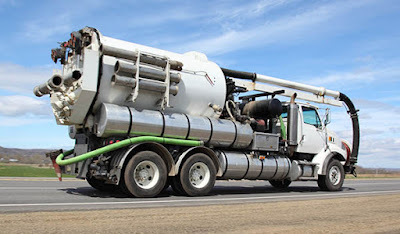Sanitation Vehicles: Reinvented Cutting-Edge Technology for Cleaner Communities
 |
| Sanitation Vehicles |
In the quest for cleaner and
healthier communities, sanitation vehicles have undergone a remarkable
transformation. Through cutting-edge technology and innovative design, these
vehicles have been reinvented to tackle waste management challenges more efficiently
than ever before.
One of the key aspects of the
reinvention of Sanitation Vehicles
lies in their enhanced efficiency and automation. Modern vehicles are equipped
with state-of-the-art systems that optimize waste collection processes.
Automated arms and lifting mechanisms streamline the collection and disposal of
waste, reducing the time required for each stop. This increased efficiency
results in faster and more effective waste management, enabling sanitation
workers to cover larger areas in less time.
Cutting-edge technology has enabled
the integration of smart sensors and data analytics into Sanitation Vehicles. These
sensors can detect the fill levels of waste bins, allowing for optimized route
planning and collection scheduling. By analyzing data collected from these
sensors, waste management authorities can make informed decisions to allocate
resources effectively. Additionally, real-time data on collection patterns and
waste composition assists in identifying areas that require targeted waste
reduction and recycling initiatives.
The reinvention of sanitation
vehicles also focuses on incorporating environmentally friendly solutions.
Electric and hybrid vehicles are increasingly replacing traditional
diesel-powered ones, significantly reducing carbon emissions and noise
pollution. Furthermore, advancements in battery technology have improved the
range and efficiency of electric sanitation vehicles, making them a viable
option for waste management operations. The use of alternative fuels and
renewable energy sources further minimizes the environmental impact of these
vehicles.
Sanitation Vehicles now leverage the Internet of Things (IoT) and
connectivity to enhance their performance. Real-time monitoring and remote
diagnostics enable proactive maintenance, minimizing vehicle downtime.
Connected systems allow for seamless communication between vehicles and waste
management centers, facilitating efficient coordination and resource
allocation. This integration of IoT and connectivity improves overall
operational effectiveness, ensuring a more streamlined and responsive waste
management system.
The reinvention of sanitation
vehicles extends beyond technological advancements. It encompasses community
engagement and education initiatives as well. Sanitation vehicles are often
used as platforms for educational programs, raising awareness about waste
reduction, recycling, and proper disposal practices. Interactive displays and
educational materials on these vehicles help promote environmental
consciousness and encourage active participation from community members.
Auto parts made using the
hydroforming method are referred to as Automotive Hydro Formed Parts. Using a
high-pressure fluid, the metal is shaped and formed into intricate patterns and
configurations using the hydroforming technique.
Sanitation vehicles have evolved
into powerful tools in the pursuit of cleaner and more sustainable communities.
The integration of smart sensors, data analytics, IoT, and connectivity has
revolutionized waste management, enabling targeted initiatives and optimized resource
allocation.



Comments
Post a Comment